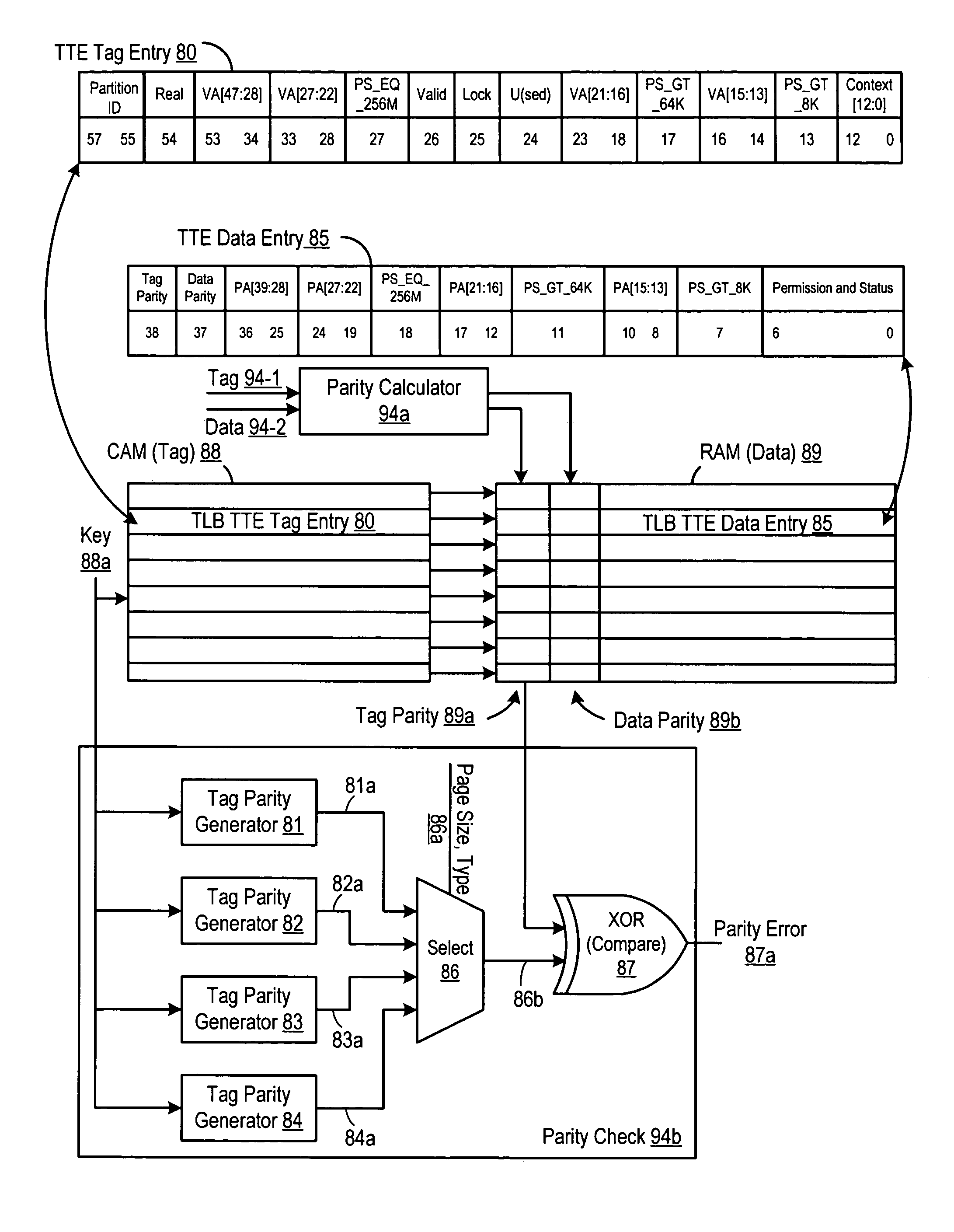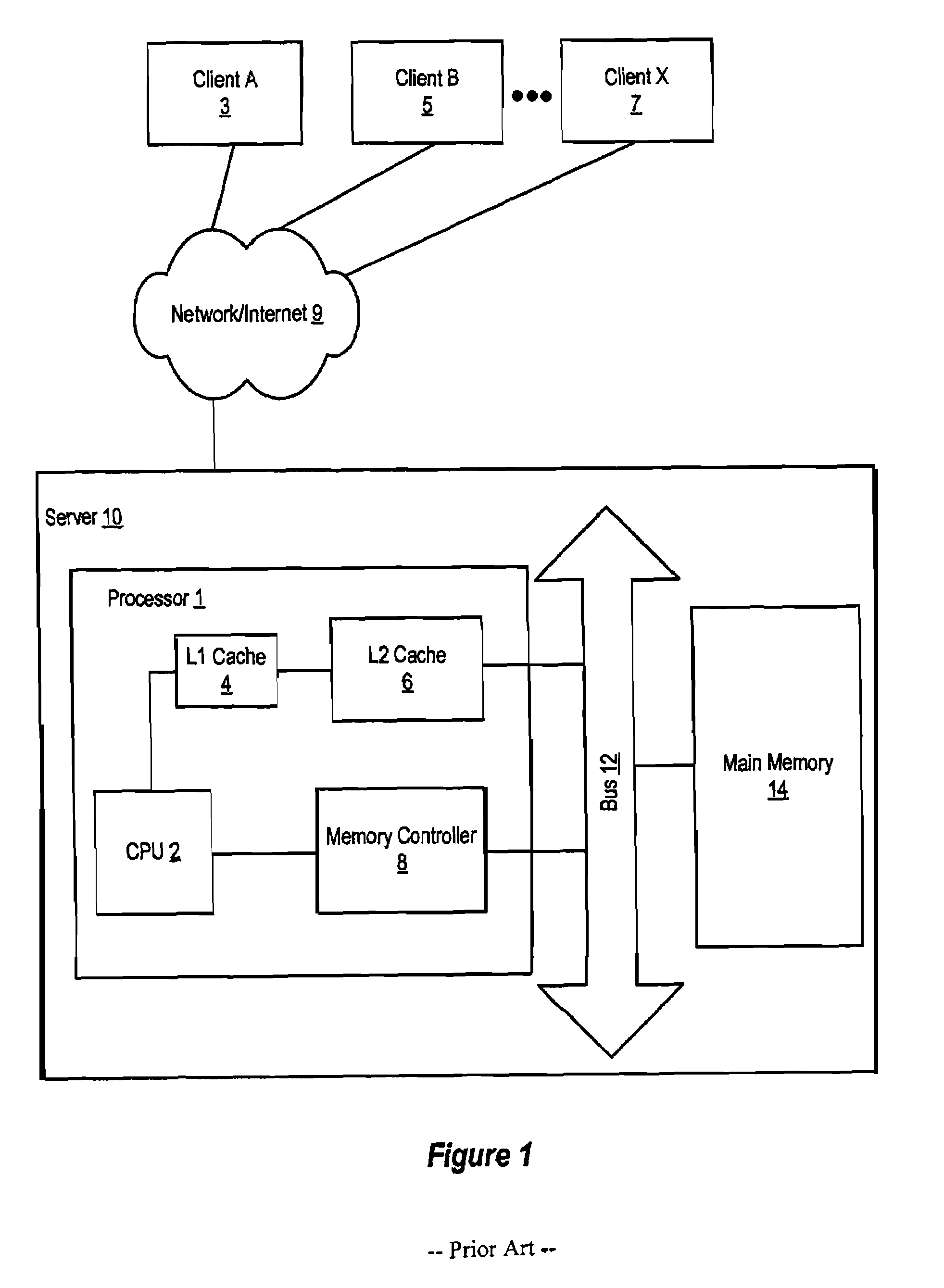TLB tag parity checking without CAM read
a parity check and buffer technology, applied in the field of parity check operations for cambased buffers, can solve the problems of large percentage of time elapsed during pipeline stalling and idle, and the most detrimental effect of stalling and idl
- Summary
- Abstract
- Description
- Claims
- Application Information
AI Technical Summary
Benefits of technology
Problems solved by technology
Method used
Image
Examples
Embodiment Construction
[0022]As explained herein, when multiple threads use a TLB to perform multiple cache memory operations on the data and / or instruction cache of a multithreaded processor, the TLB must efficiently, quickly and accurately perform its address translation function. For purposes of providing an exemplary and not limiting description, it will be useful to describe the various aspects and embodiments of the invention herein in the context of a content addressable memory (CAM). However, the data array portion of the TLB may be used in connection with any form of memory products, including without limitation, any fully associative memory, DRAM, ROM, flash, PLA and the like, whether integrated within a VLSI system, cache or non-cache, or a stand alone memory device.
[0023]A selected embodiment of the present invention is shown in FIG. 3, which depicts a simplified schematic diagram of a processor chip 30 having multiple processor cores for processing multiple threads. In the illustrated embodim...
PUM
 Login to View More
Login to View More Abstract
Description
Claims
Application Information
 Login to View More
Login to View More - R&D
- Intellectual Property
- Life Sciences
- Materials
- Tech Scout
- Unparalleled Data Quality
- Higher Quality Content
- 60% Fewer Hallucinations
Browse by: Latest US Patents, China's latest patents, Technical Efficacy Thesaurus, Application Domain, Technology Topic, Popular Technical Reports.
© 2025 PatSnap. All rights reserved.Legal|Privacy policy|Modern Slavery Act Transparency Statement|Sitemap|About US| Contact US: help@patsnap.com



